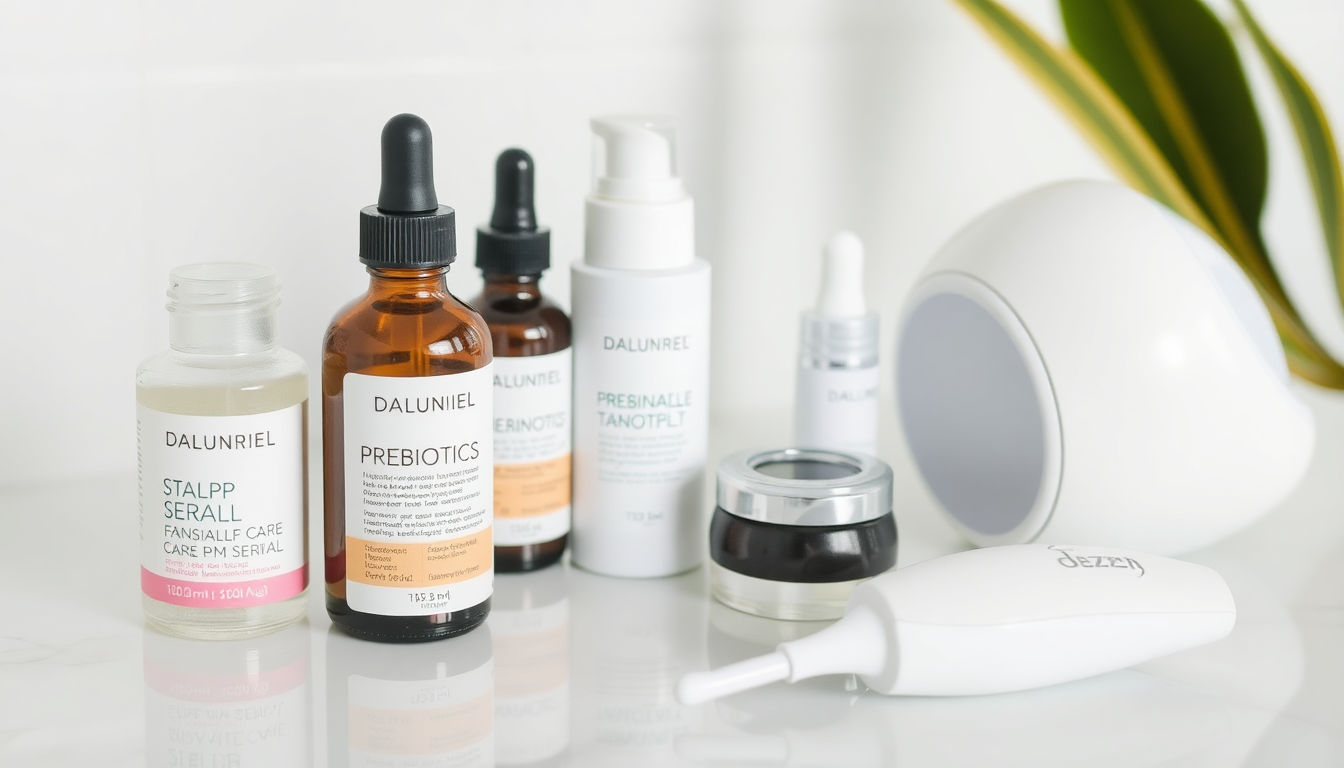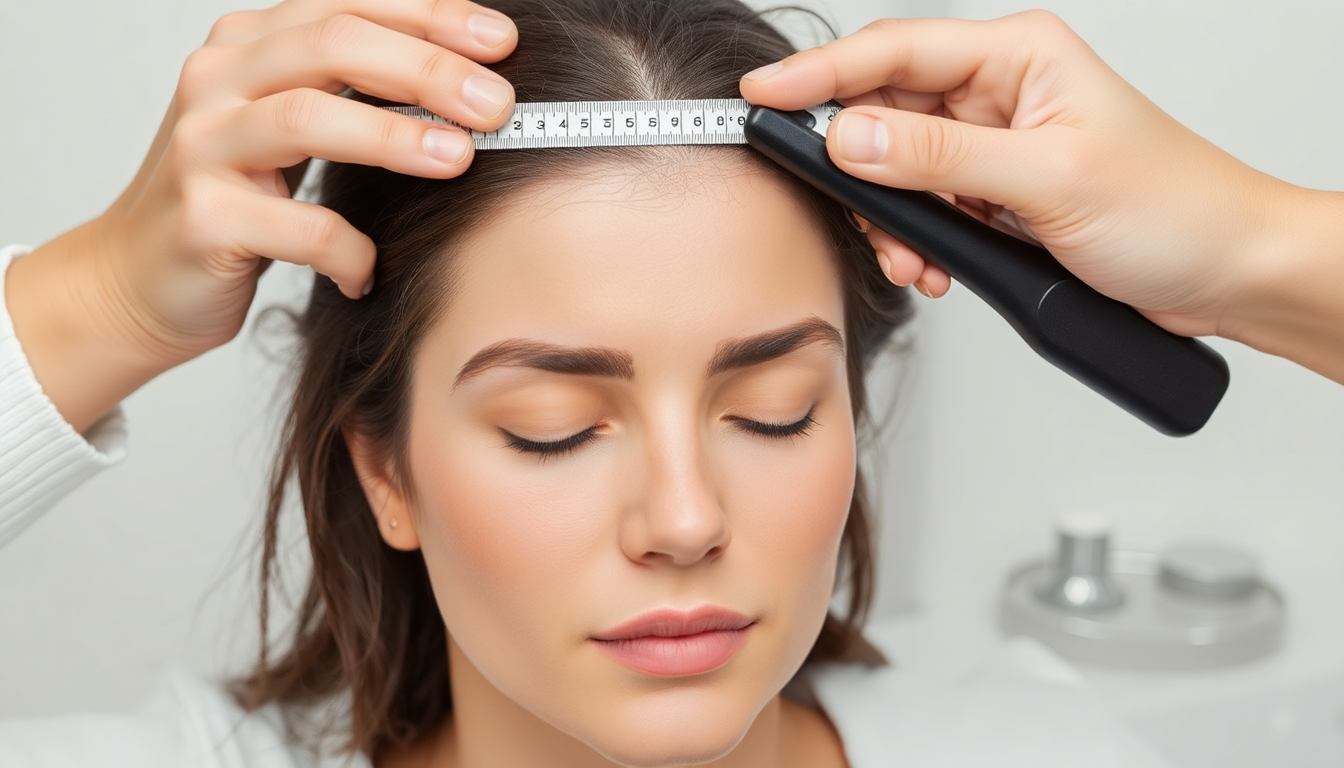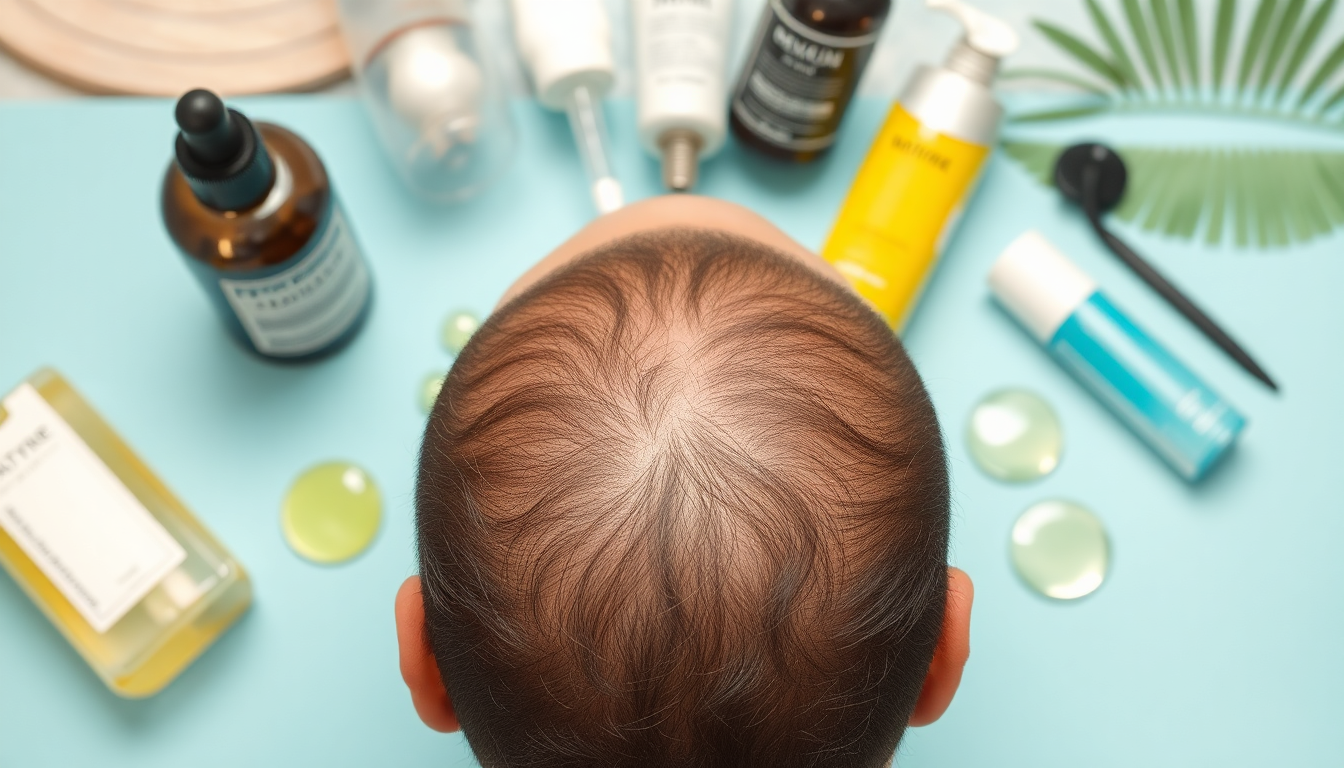Introduction — Why a Scalp Performance Protocol?
Thinning hair and reduced hair density affect millions worldwide and span age groups, genders and ethnicities. In 2025, the best approaches are not single "magic" treatments but thoughtfully combined routines that address the scalp environment, follicle signaling and mechanical stimulation. This article gives a deep, practical comparison of three pillars — peptide serums, prebiotic scalp treatments and at‑home devices — and walks you through building a personalized hair‑density protocol that prioritizes safety, efficacy and adherence.
What this guide covers
- How peptide serums, prebiotic treatments and devices work.
- Key ingredients, mechanisms and practical application tips.
- Comparisons to help you choose what to prioritize and when.
- Step‑by‑step routines for beginners through advanced users.
- Device safety, product selection criteria and troubleshooting.
- Sponsor links to curated options to help you start (Eelhoe).
Core science: what determines hair density?
Hair density is determined by follicle number, hair cycle dynamics (anagen, catagen, telogen), follicle miniaturization and the quality of the scalp microenvironment. Common drivers of thinning include genetics, hormonal changes (e.g., androgens), inflammation, scalp dysbiosis, aging and environmental stressors. Effective scalp protocols target multiple mechanisms: reduce inflammation, optimize follicle signaling, improve nutrient and oxygen delivery, and maintain a healthy microbiome on the scalp surface.
Overview of the three pillars
- Peptide serums: topical actives that mimic signaling molecules to promote scalp health and strengthen hair shafts.
- Prebiotic treatments: products that feed beneficial microbes and support a balanced scalp microbiome, lowering chronic irritation.
- At‑home devices: physical modalities (LLLT/LED, microneedling, sonic massagers) that stimulate circulation, cellular activity and delivery of topicals.
Peptide serums: deeper dive
Peptides are short chains of amino acids that can influence cellular signaling when formulated to penetrate the scalp. Common peptide classes for hair include copper peptides, matrikines (e.g., acetyl tetrapeptide‑3), and synthetic signaling fragments that target dermal papilla cells and extracellular matrix remodeling.
Common peptides and their roles
- Copper peptides (GHK‑Cu): support wound healing, extracellular matrix synthesis and may strengthen hair shafts.
- Acetyl Tetrapeptide‑3: used to support anchorage of the hair shaft to the follicle and reduce miniaturization in some formulations.
- Palmitoyl Tetrapeptide / Palmitoyl Tripeptide blends: designed to modulate inflammation and promote a healthier follicular environment.
Formulation and delivery
Peptides are water‑soluble and commonly delivered in serums, hydrogels or lightweight lotions. Vehicle matters: aqueous serums with penetration enhancers (e.g., propanediol, glycerin) typically spread evenly and absorb into the scalp better than heavy oils. pH, preservatives and peptide stability affect efficacy, so look for transparent ingredient lists and stability claims.
Application best practices
- Apply to clean, dry or towel‑damp scalp as directed (most peptides are used once or twice daily).
- Use the dropper or applicator to target thinning zones and gently massage to increase contact.
- Patch test new peptide serums on an inconspicuous scalp area for 48 hours to check tolerance.
Expected results & timeline
Peptide serums often require consistent use for 3–6 months before visible improvements in hair thickness or scalp condition. Benefits may include improved hair shaft feel, reduced breakage and a calmer scalp; however, peptides are supportive rather than curative for androgenetic alopecia where medical therapies may be needed.
Prebiotic scalp treatments: the microbiome angle
The scalp hosts a complex microbial community. When this ecosystem is balanced, inflammation and irritation are less likely to impair hair growth. Prebiotics are ingredients that selectively feed beneficial microbes (e.g., certain commensal bacteria and yeasts) and can reduce dysbiosis that contributes to itch, flaking and chronic low‑grade inflammation.
Key prebiotic ingredients
- Inulin and oligosaccharides — common prebiotic sugars.
- Plant polysaccharides (e.g., beta‑glucans) — support barrier and microbial nourishment.
- Postbiotic extracts — fermented ingredients that deliver microbial metabolites without live organisms.
Prebiotics vs probiotics
Probiotics deliver live bacteria; prebiotics feed resident beneficial microbes. For the scalp, prebiotic and postbiotic approaches are often more practical because they avoid stability and regulatory challenges of live organisms and reduce infection risk when applied to broken skin.
How to use prebiotic treatments
- Incorporate prebiotic shampoo 1–3× weekly depending on oiliness and build‑up.
- Use leave‑on prebiotic serums or tonics after washing to prolong exposure to the scalp.
- Pair with anti‑inflammatory ingredients (e.g., niacinamide, panthenol) if you have irritation.
What to expect
Prebiotic care tends to reduce flaking, redness and itching within weeks. Effects on density are indirect — by lowering inflammation and optimizing the microenvironment, prebiotics help other actives work better and promote healthier hair cycles over months.
At‑home devices: options, evidence and safe use
Physical stimulation can complement topical strategies. The most common at‑home devices are:
- Low‑level laser therapy (LLLT) / LED: uses red/near‑infrared light to stimulate cellular activity and increase microcirculation.
- Microneedling (derma rollers or pens): creates microchannels to boost product delivery and triggers repair signaling.
- Sonic scalp massagers / mechanical stimulators: improve blood flow and aid in product distribution.
LLLT specifics
- Common therapeutic wavelengths: 630–680 nm (red) and 800–900 nm (near‑infrared).
- Effective devices list energy density (mW/cm²) and total dose; look for devices with published specifications.
- Typical regimen: 2–4 sessions per week, 10–20 minutes per session; improvements often measured after 3–6 months.
Microneedling guidance
- Home microneedling is generally limited to shallow needles (0.25–0.5 mm) to minimize risk; deeper treatments (0.75–1.5 mm) should be performed by professionals.
- Spacing: home microneedling every 1–2 weeks; professional sessions every 4–6 weeks depending on needle depth.
- Strict antisepsis is essential: disinfect tools before and after, avoid use over inflamed or infected areas.
Safety and contraindications
- Do not use microneedling if you have active scalp infections, keloid scarring tendencies or are on isotretinoin or blood thinners without clinician approval.
- Stop device use and see a clinician for persistent pain, discharge, or sudden worsening of shedding.
- Follow manufacturer instructions carefully for device cleaning and session length.
Direct comparison: pros, cons and when to prioritize each pillar
| Approach | Primary Benefits | Limitations | When to prioritize |
|---|---|---|---|
| Peptide serums | Follicle signaling, hair shaft support, easy daily use | Slow results; quality varies | Early thinning, maintenance, users seeking low‑risk daily routine |
| Prebiotic treatments | Reduces scalp inflammation, supports microbiome | Indirect effect on density; product claims vary | Scalp irritation, flaking, oily scalp or sensitive skin |
| At‑home devices (LLLT/microneedling) | Objective stimulation, can enhance delivery and cellular activity | Requires adherence; microneedling risks if misused | Moderate thinning, users seeking measurable stimulation |
Designing your personalized hair‑density routine: practical templates
Below are generalized routines. Personalize based on scalp sensitivity, hair type and schedule.
Starter routine — gentle and low‑commitment
- Morning: gentle scalp massage with fingertips; apply lightweight peptide serum to targeted zones (if labeled AM use).
- 2× per week: prebiotic shampoo; follow instructions and use lukewarm water.
- Nights: apply peptide serum if a PM application is recommended; sleep on a clean pillowcase and avoid tight hairstyles.
- Device: none initially. Reassess after 3 months.
Balanced routine — moderate intervention
- Daily: peptide serum AM/PM as directed.
- 2–3× weekly: prebiotic shampoo; after washing, use a leave‑on prebiotic tonic.
- LLLT: 3 sessions/week, 12–15 minutes each.
- Monthly: reassess photos and scalp condition; switch or rotate products if irritation arises.
Advanced routine — under clinician supervision
- Daily: clinical‑strength peptide serum (per clinician) and targeted anti‑inflammatory topicals as needed.
- Weekly: professional microneedling sessions (or supervised shallow home microneedling) with post‑treatment growth factors or serums.
- LLLT: 4–5× weekly adjunctive use.
- Regular clinical follow‑up for labs and assessment of medical causes (thyroid, iron, androgen levels).
Routine scheduling: sample weekly calendar
- Monday: LLLT (15 min) + peptide serum PM
- Tuesday: Peptide serum AM/PM
- Wednesday: LLLT (15 min) + prebiotic shampoo PM
- Thursday: Peptide serum AM/PM
- Friday: LLLT (15 min) + peptide serum PM
- Saturday: Scalp massage + prebiotic leave‑on tonic
- Sunday: Rest day; moisturizing care if scalp is dry
Picking products: evidence, transparency and labeling
- Ingredient transparency: choose brands that list peptide types and concentrations rather than vague "peptide complex" claims.
- Third‑party testing: stability and microbial testing reduce risk, especially for water‑based serums.
- Clinical data: prefer brands publishing consumer studies or clinical trials for the specific product.
- Compatibility: ensure topicals you combine are chemically compatible (pH and solvent compatibility) and don't cause irritation together.
Curated pick: for combined peptide and prebiotic solutions designed for integration with devices, explore options such as the Eelhoe peptide scalp serum and the Eelhoe prebiotic scalp treatment, formulated to be used together and suitable for daily routines.
Troubleshooting: common issues and fixes
- Irritation after a new serum: stop use, rinse area, use gentle barrier repair products; reintroduce at lower frequency or consult a dermatologist.
- No visible improvement after 3 months: check adherence, application technique, and consider adding a device or seeking medical evaluation for underlying causes.
- Increased shedding initially: a temporary "shock" shedding can occur when hair cycles shift; if shedding continues beyond 8–12 weeks, seek professional advice.
Case examples (anonymized)
Below examples illustrate realistic progress timelines when combining pillars. Results vary by individual.
- Case A — early thinning, 28F: Started daily peptide serum + prebiotic shampoo 2× weekly. At 4 months, reduced breakage and improved scalp comfort; new baby hairs visible at 6–9 months.
- Case B — moderate male pattern thinning, 42M: Combined LLLT 3×/week with peptide serum and prebiotic tonic. At 6 months, increased hair thickness in vertex area and improved hair density score by mid‑range in objective photos.
- Case C — sensitive scalp with diffuse shedding, 50F: Focused first on prebiotic and anti‑inflammatory regimen, then added peptide serum after 8 weeks. Scalp inflammation decreased at 6 weeks and density stabilized by 4 months.
Advanced considerations: hormones, nutrition and lifestyle
- Hormonal factors (androgens, thyroid) can profoundly affect density. If pattern loss or sudden changes occur, request endocrine testing via your clinician.
- Nutrition: adequate protein, iron, vitamin D, and B vitamins support hair growth. Consider lab testing for deficiencies before supplementing aggressively.
- Stress and sleep: chronic stress can shift hair cycles into telogen; managing stress improves outcomes across all scalp protocols.
SEO & shopping tips — shop smart
When searching online, use precise keywords to find high‑quality products and reviews. Examples of effective search phrases:
- "peptide scalp serum for hair density"
- "prebiotic scalp treatment for flaking"
- "LLLT device hair growth specifications mW/cm2"
- "best at home microneedling needle length scalp"
Commercial suggestion: if you prefer to start with products designed to integrate, check curated ranges such as Eelhoe scalp density kit which bundles peptide serums and prebiotic treatments optimized for daily and device‑assisted routines.
Detailed FAQ
- Q: Can women and men use the same peptide serums? A: Generally yes, but formulations and concentrations may be marketed differently. Women with hormonal hair loss should consult a clinician before starting new topicals.
- Q: Do prebiotics interfere with topical medications? A: Most prebiotics are benign and compatible, but check pH and excipient compatibility if combining with prescription topical agents.
- Q: How long should I commit before deciding a routine isn't working? A: Give a structured routine at least 4–6 months for preliminary assessment and 9–12 months for clearer density outcomes.
Regulatory and safety notes (important)
Topical cosmetics (peptide serums, prebiotic shampoos) are regulated differently from medical treatments. Claims of hair regrowth versus cosmetic hair thickening have regulatory implications. Devices with therapeutic claims may be regulated as medical devices in some jurisdictions; buy devices with appropriate certifications. Always verify claims and consult a medical professional for diagnostic or prescription needs.
Checklist: what to buy & what to track
- One targeted peptide serum (transparent ingredient list) — start with 1 bottle and commit to 3 months.
- One prebiotic shampoo and one leave‑on prebiotic tonic for alternating use.
- If choosing a device, pick an LLLT product with published specs or a reputable microneedling pen and follow guidance strictly.
- Track: monthly photos (same light, same angle), notes on shedding, itchiness, and hair texture changes.
Where to begin today
Start simple: choose a peptide serum formulated for the scalp and an easy prebiotic shampoo to calm the surface. Introduce one new product at a time, monitor for irritation and take monthly photos to document progress. If you decide to integrate devices, educate yourself on safety and buy from trusted manufacturers with clear specifications.
Recommended starting products (curated)
For a streamlined entry into an integrated protocol, consider products formulated to be used together. For example, the Eelhoe peptide scalp serum (keyword: "peptide scalp serum") and the Eelhoe prebiotic scalp treatment (keyword: "prebiotic scalp treatment") are positioned for compatibility with at‑home devices and daily routines. Browse their selection to find targeted kits and usage guides.
Final thoughts — personalization, patience and partnership
Improving hair density is a marathon, not a sprint. The best results come from combining evidence‑based topicals (peptides), microbiome‑friendly care (prebiotics) and consistent stimulation (devices) tailored to your scalp's sensitivity and lifestyle. Measure progress objectively with photos and notes, adjust based on tolerance, and seek clinical advice for aggressive or sudden hair loss.
Call to action — start building your protocol
If you want a curated, compatible set of products to begin an integrated scalp performance protocol, consider exploring the Eelhoe range: the Eelhoe peptide serums for scalp and Eelhoe prebiotic scalp treatments are formulated to pair with device protocols and daily care routines. Visit Eelhoe to browse kits, read usage guides, and start crafting your personalized hair‑density routine today.
Disclaimer
This article provides general information and is not a substitute for professional medical advice, diagnosis, or treatment. Consult a qualified healthcare provider for personalized recommendations, especially if you have medical conditions or are taking medications.




Leave a comment
All comments are moderated before being published.
Този сайт е защитен чрез hCaptcha и се прилагат Правилата за поверителност и Условията за използване на услугата на hCaptcha.